Category: VENDORSNEWSRidge Security News
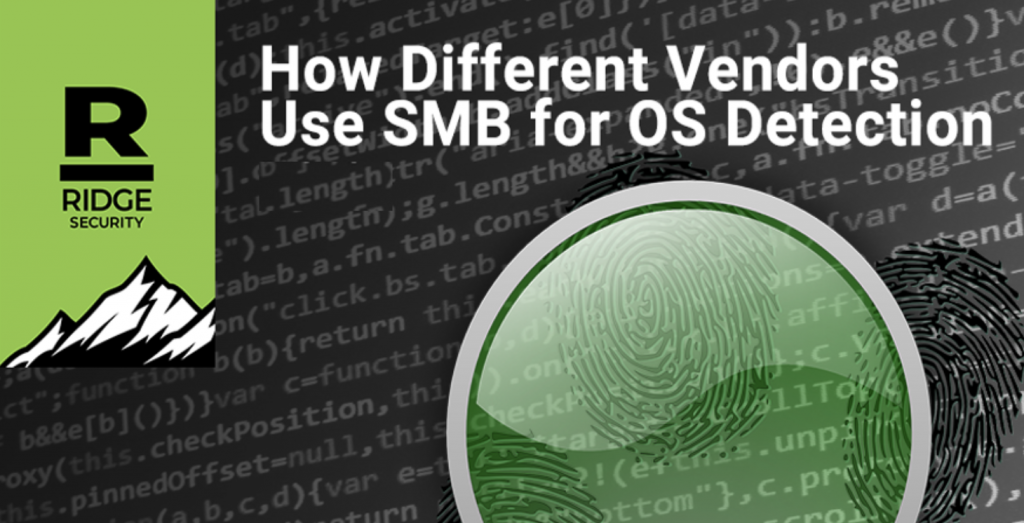
You may wonder “how does a blackbox penetration test tool know about my server information when it only has the server’s IP address?” The secret is a protocol, such as Sever Message Block (SMB), discloses that information in the response to your special requests.
In our last blog, we talked about the essential role that SMB plays in Operating System (OS) fingerprint recognition. In this blog, we will review how different vendors use SMB, and the pros and cons of each approach; and in the end, we summarize them into a few principles to follow in order to get an accurate OS recognition.
First, let’s look at Nmap’s approach. Nmap basically uses “nse script – nmap/scripts/smb-os-discovery.nse” to realize this function. Its method is shown as follows:
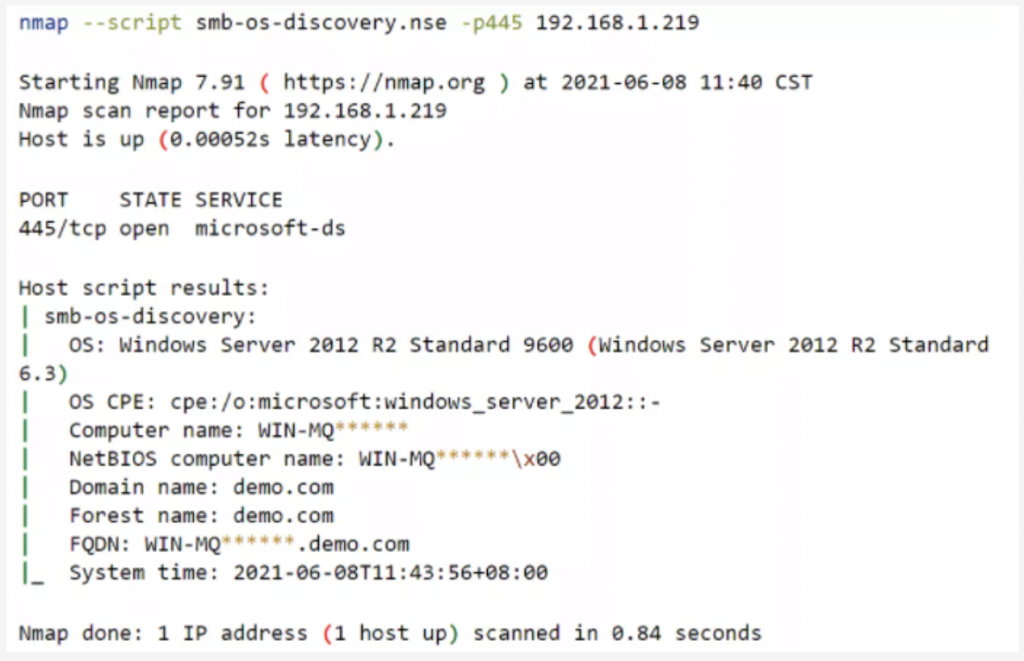
Most likely Censys uses Nmap -sV option to detect SMB OS. After carefully examining Censys’s response to our test machine, we tend to get this conclusion. Due to the same flaw, it falsely detected our test machine Windows Server 2016 as Windows Server 2008 R2 -2012 microsoft -ds. (see Figure 1)
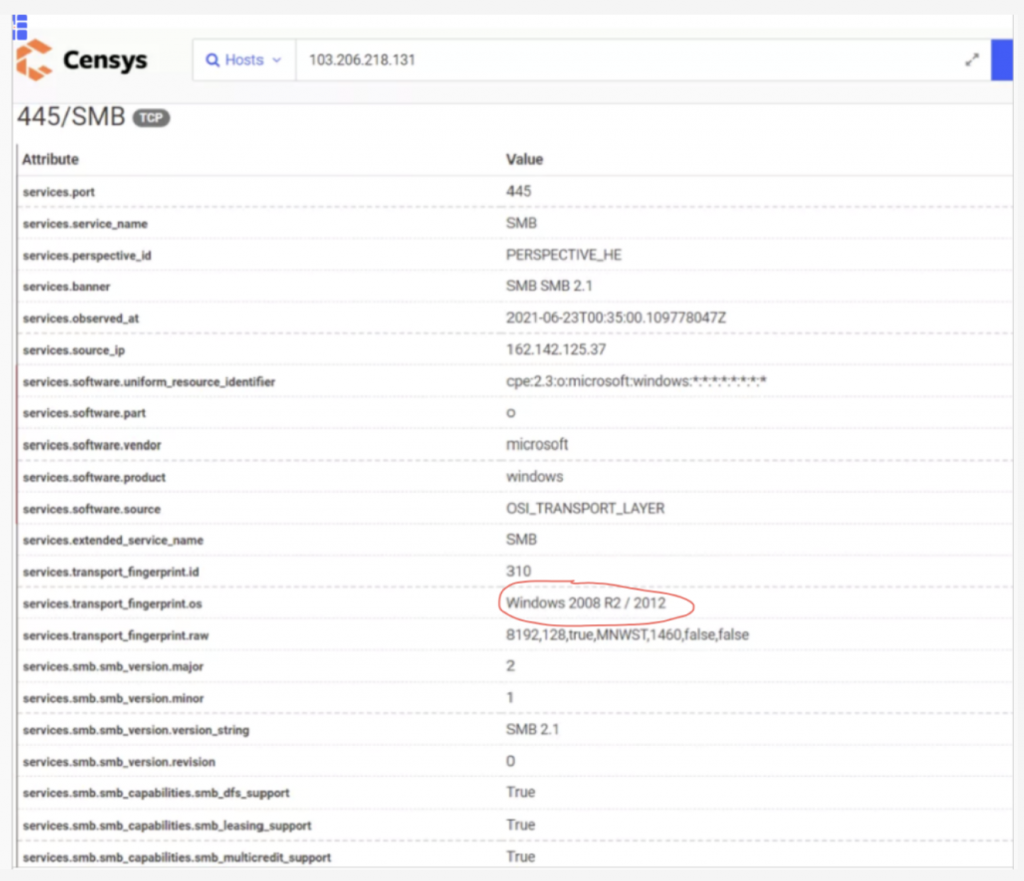
We reviewed Shodan’s OS recognition with SMBv1 (Figure 2) and SMBv2(Figure 3), and found that Shodan uses its priorietary approach to deal with OS regconition, and it scanned the common directory which is considered more intrusive scanning.


It’s worth mentioning that by using the following fields:
The target’s OS can be determined by combining the information obtained from these two fields.
In example 2, NativeLanMan shows correct information and Native OS presented a false recognition.
MSF uses “auxiliary/scanner/smb/smb_version” module to detect SMB OS. The test shows its accuracy is as good as Shodan’s. Figure 4 is MSF’s export of OS information via SMB:
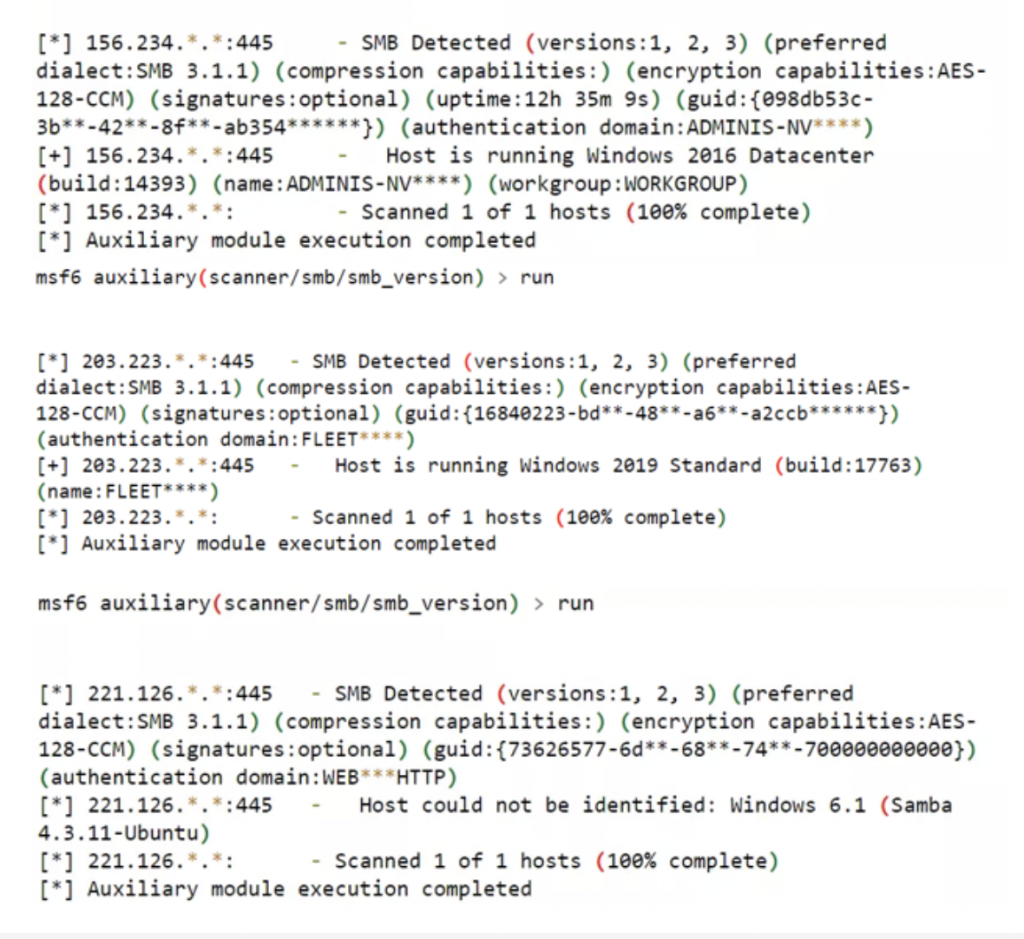
And when tested with a target that supports SMBv2 only, MSF shows relative comprehensive analysis, as shown below.

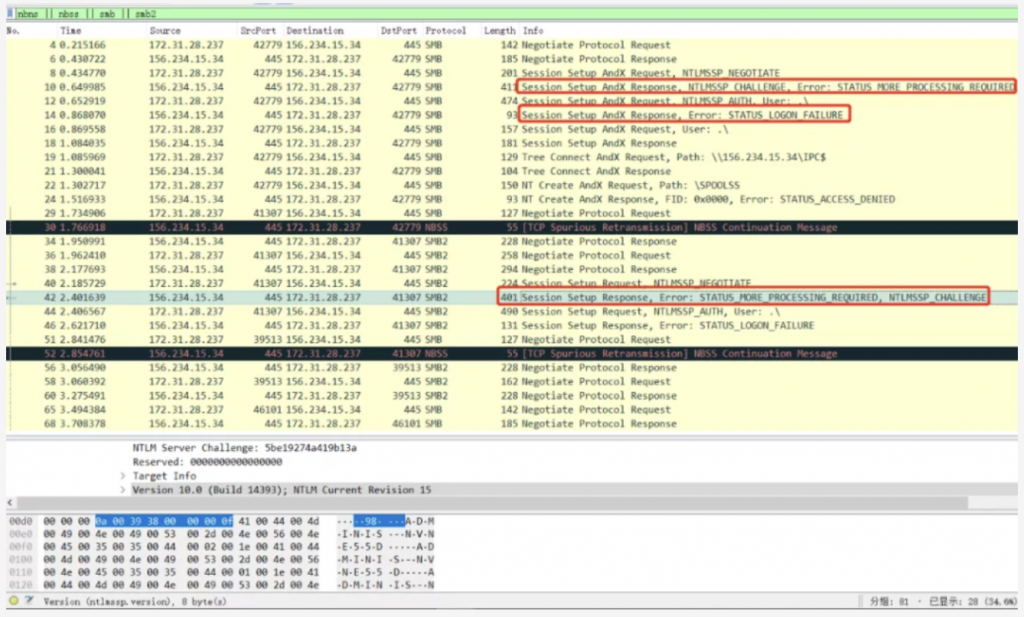
Category: VENDORSNEWSRidge Security News
